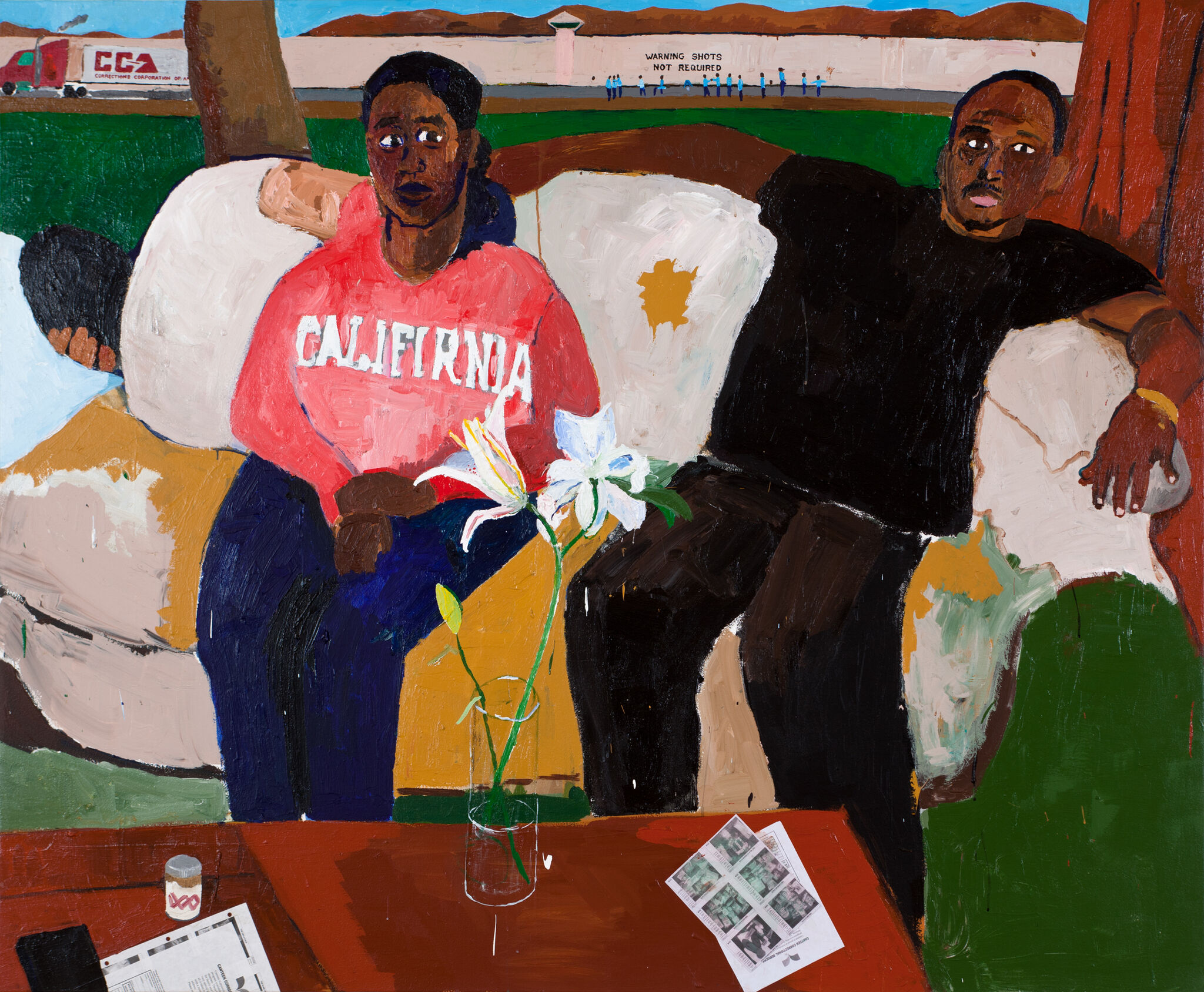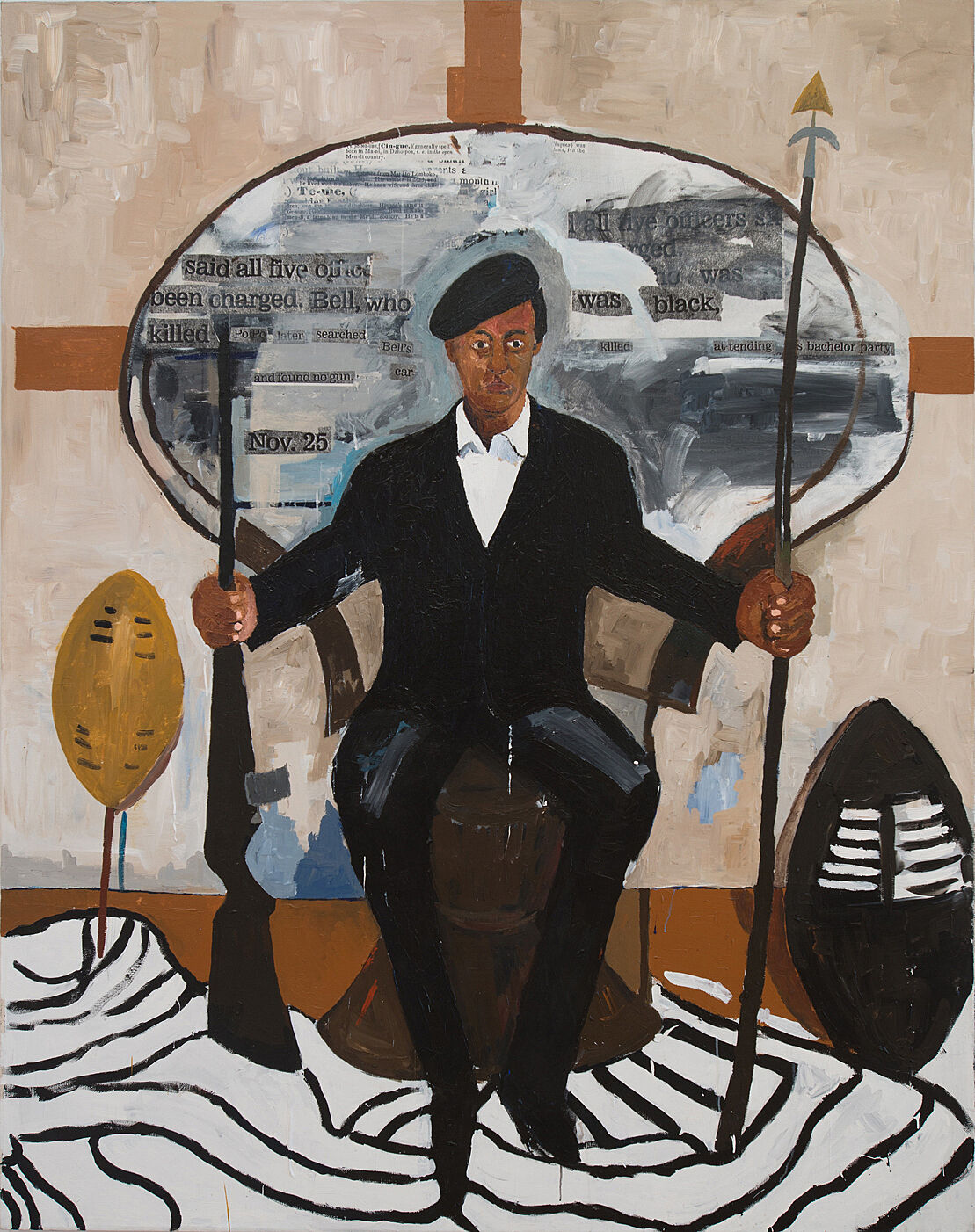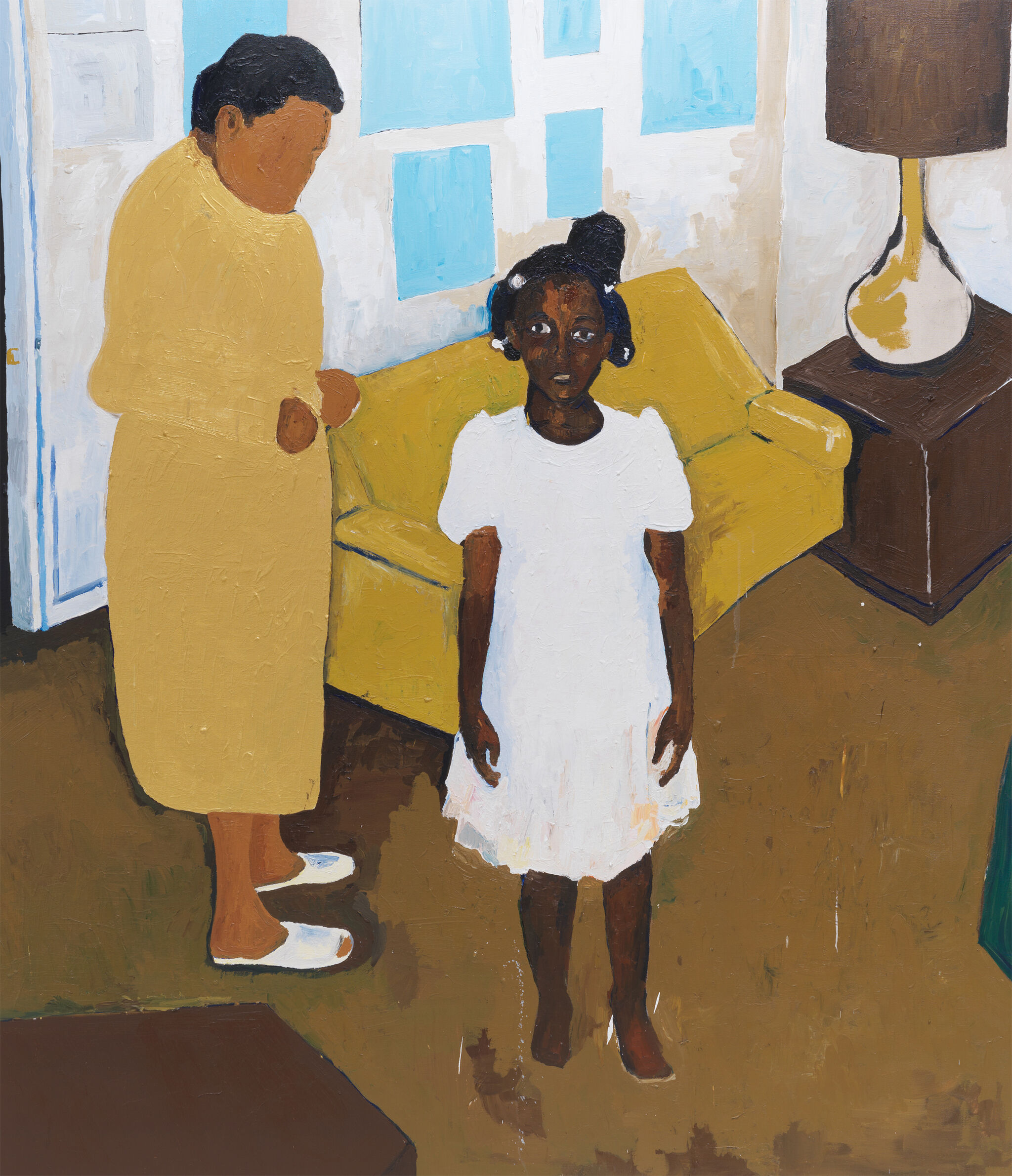Confronting Histories
Artists create new perspectives through their work by questioning dominant narratives. Taylor describes, “I don’t feel any allegiance to history anymore. I’ve looked at history for so long that I’ve had to just leave it alone. But when you’re in front of the canvas, you don’t know what’s going to permeate…” He stresses, “Being honest and real is the most important thing…And the truth, sometimes, is hard to tell.”
Taylor depicts contemporary life and survival amid the ever-present threat of violence. In his large painting, Resting, 2011, he alludes to the impact of overcriminalization and mass incarceration. For this painting the artist painted his niece and nephew. They sit on a sofa in front of a coffee table with a vase with flowers and prison commissary forms. The backdrop view is of a prison. Taylor’s niece wears a sweater with the word “CALIFORNIA.” This state has the second largest prison population in the United States. Taylor brings to mind mass incarceration and explains, “I might make a composition and decide to put a helicopter in there to remind me that we’re all living in a police state. I live in L.A. You hear police helicopters all the time.”
Taylor has an ongoing interest in activism and liberation. Growing up in California, at the height of the Black Panther Party for Self Defense’s activism, his older brother Randy was his role model and associated with the Black Panthers. Taylor recounts, “He made us all more politically conscious. And I read everything he read–including Native American activists like Russell Means and Leonard Peltier–because I wanted to be just like him.” In Huey Newton, 2007, Taylor bases his painting on the iconic 1967 photograph by Blair Stapp of Black Panther Party co-founder Huey Newton (1942-1989). Newton wears his characteristic black beret and holds a rifle and spear symbolizing the party’s militancy in promoting social change.
ACTIVITIES
How would you combine personal and public histories?
Taylor, who draws from personal and public experiences, portrays life by combining memories, current events, history and imagined scenarios. He explains, “A lot of things that I’m thinking about I might have been thinking about for years.” Encourage students to discuss inequities that personally impact their lives. Have them research these issues across scholarly resources. Motivate students to devise a creative and critical way of weaving together their individual and collective findings.
How would you reimagine the past?
Encourage students to choose and discuss a historical event that is relevant to them. Ask them to study and analyze their selected event. Then invite students to imagine alternative end results for their historical events. Have them create a work of writing or visual arts that expresses their reimagined endings to these histories.
How would you question existing injustices?
Some of Taylor’s paintings address racial and social injustices. Invite students to reflect on current injustices that concern them. Encourage them to discuss their perspectives and how they could present their opinions through writing, poster designs, or social media campaigns.
How could you support people who are incarcerated?
More than two million people are currently incarcerated in the United States. Mass incarceration places people under abusive conditions and separates them from their communities and families. Invite students to create an artwork and write a message to send to a person in prison for support, solidarity, and hope.



